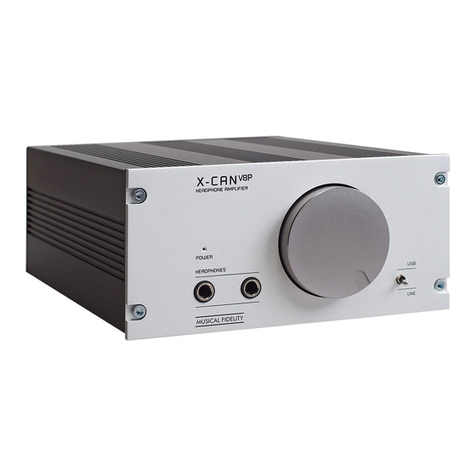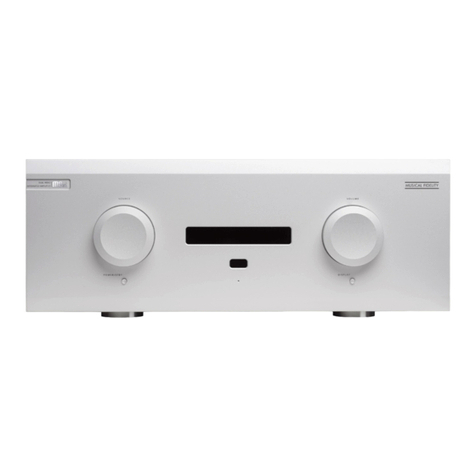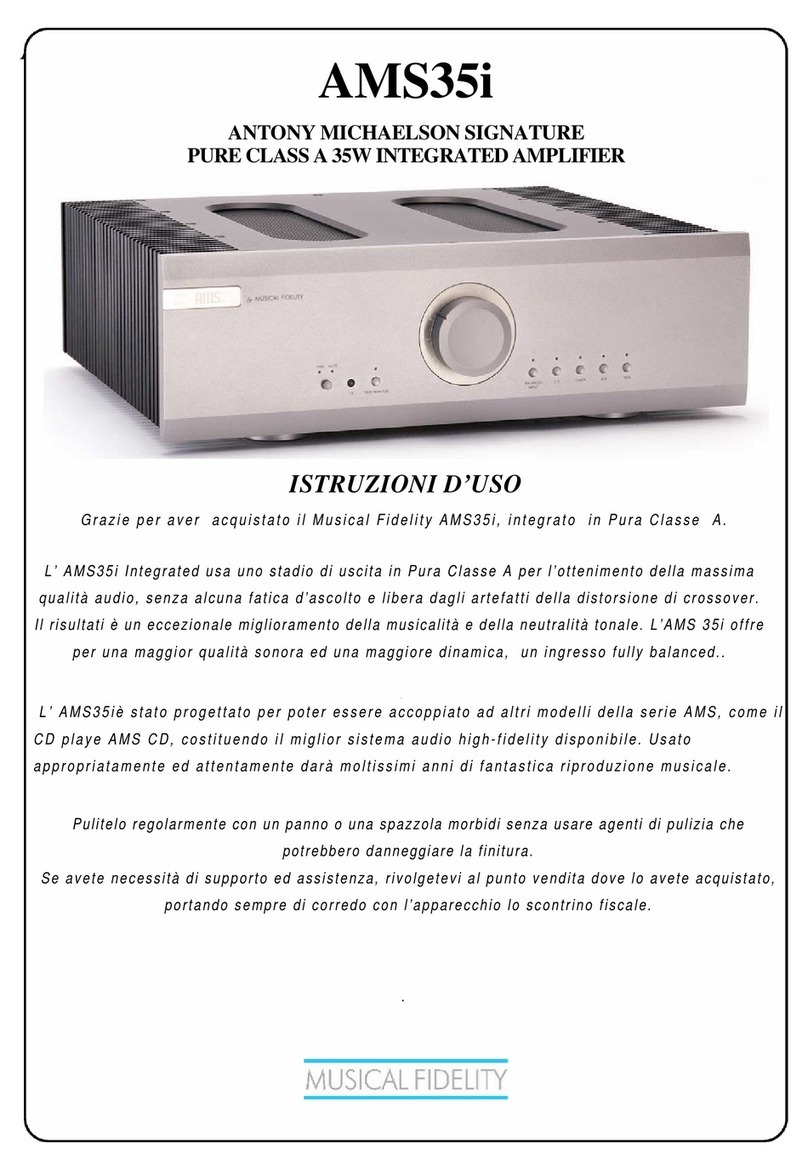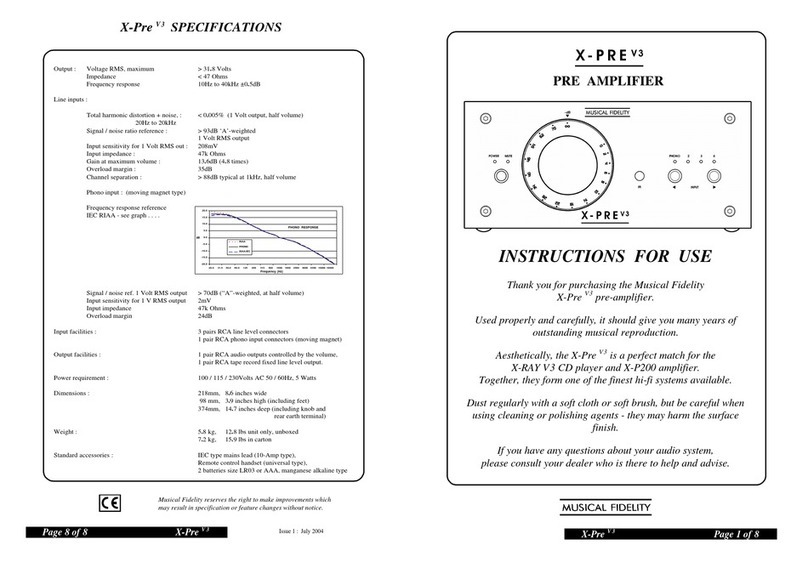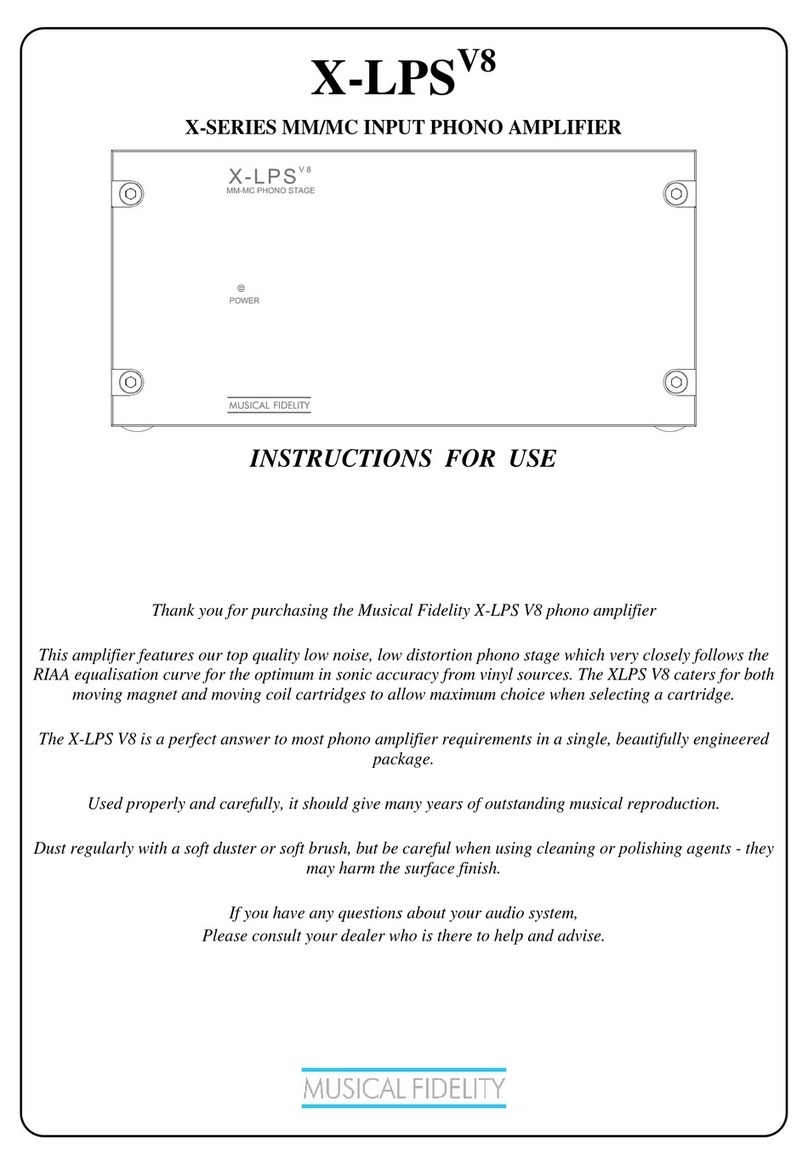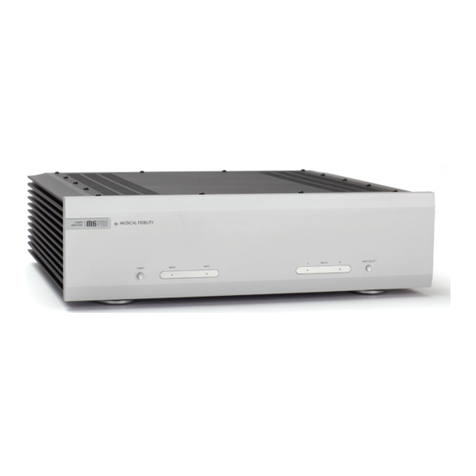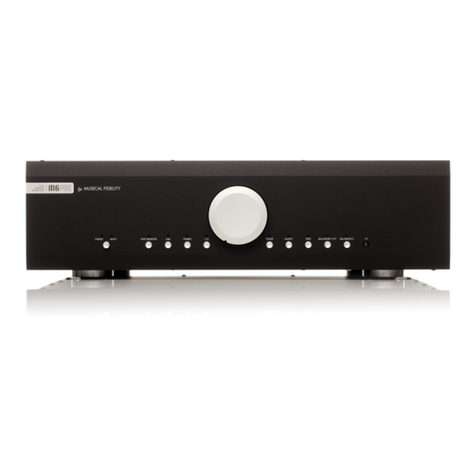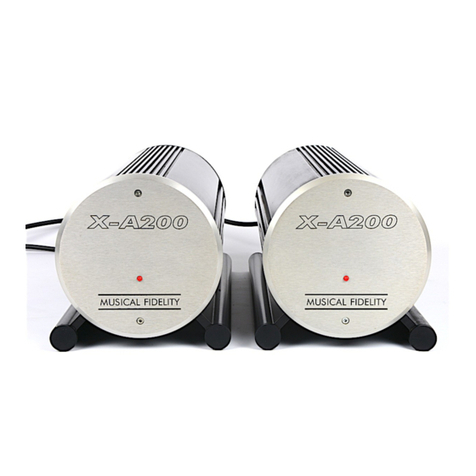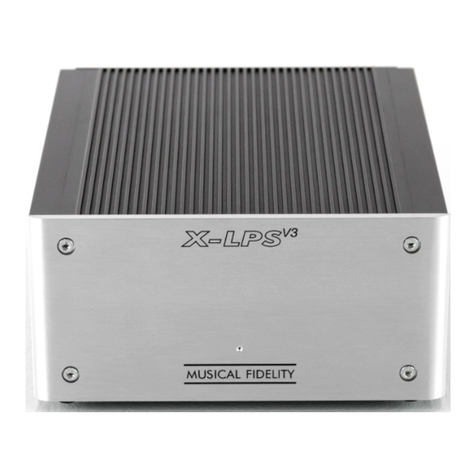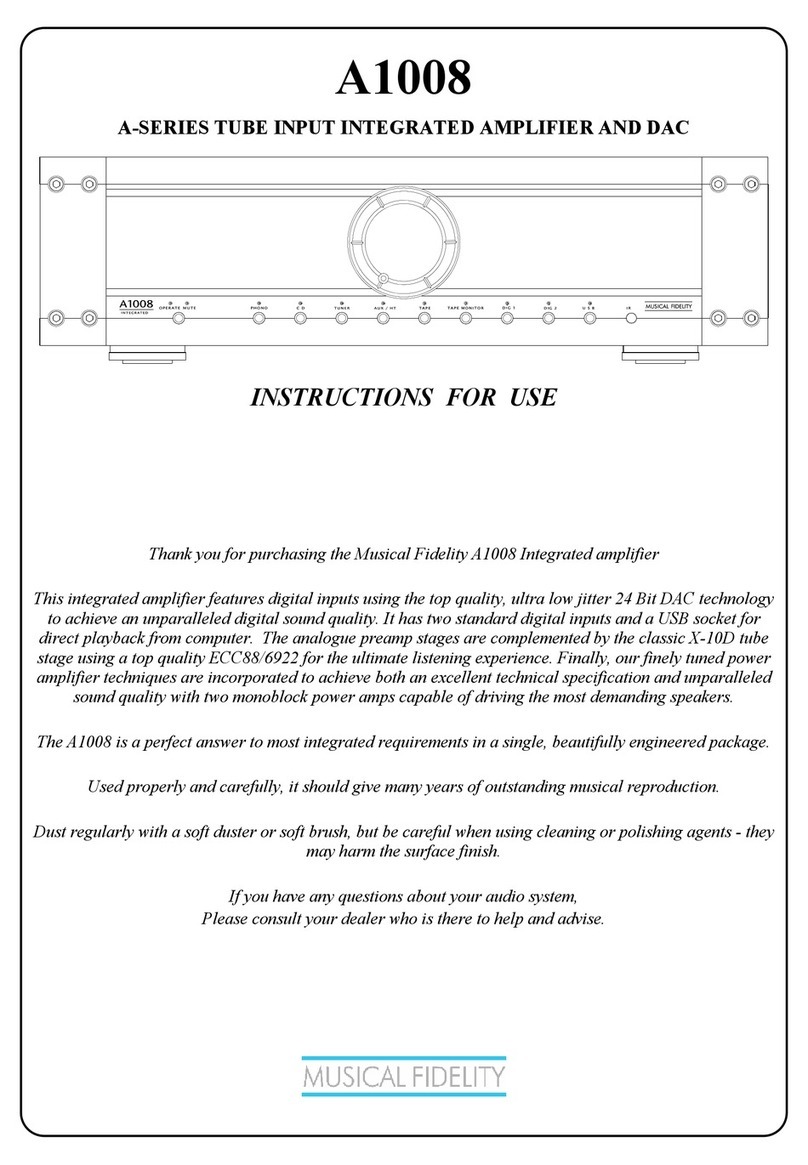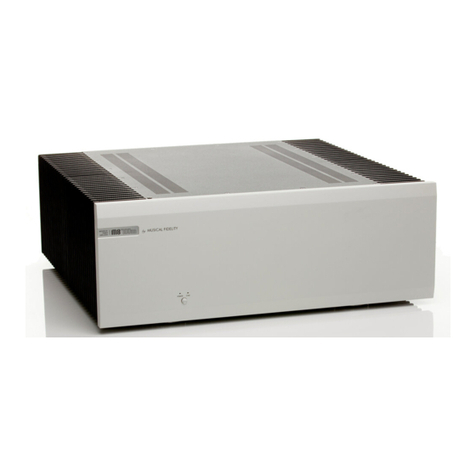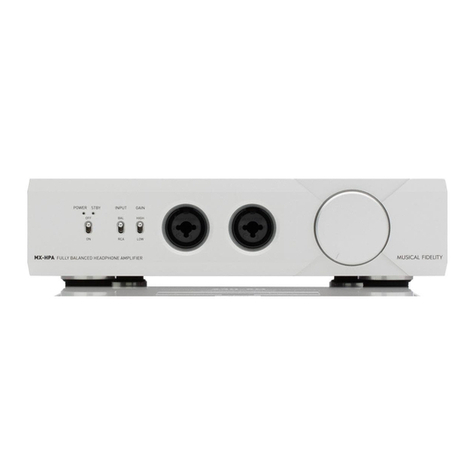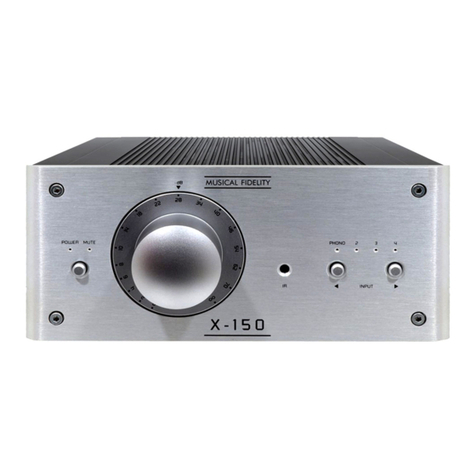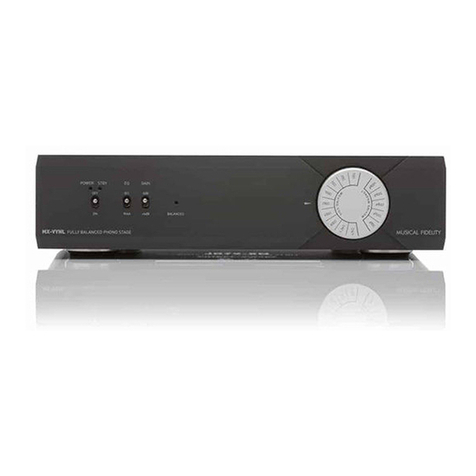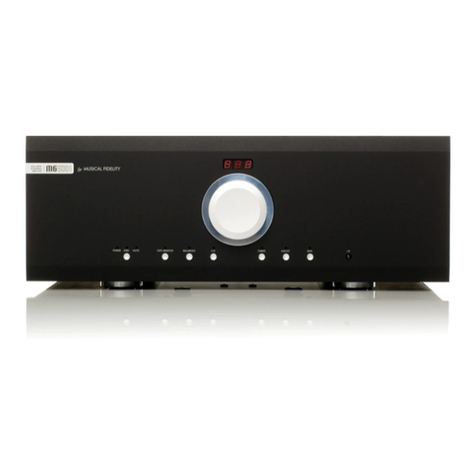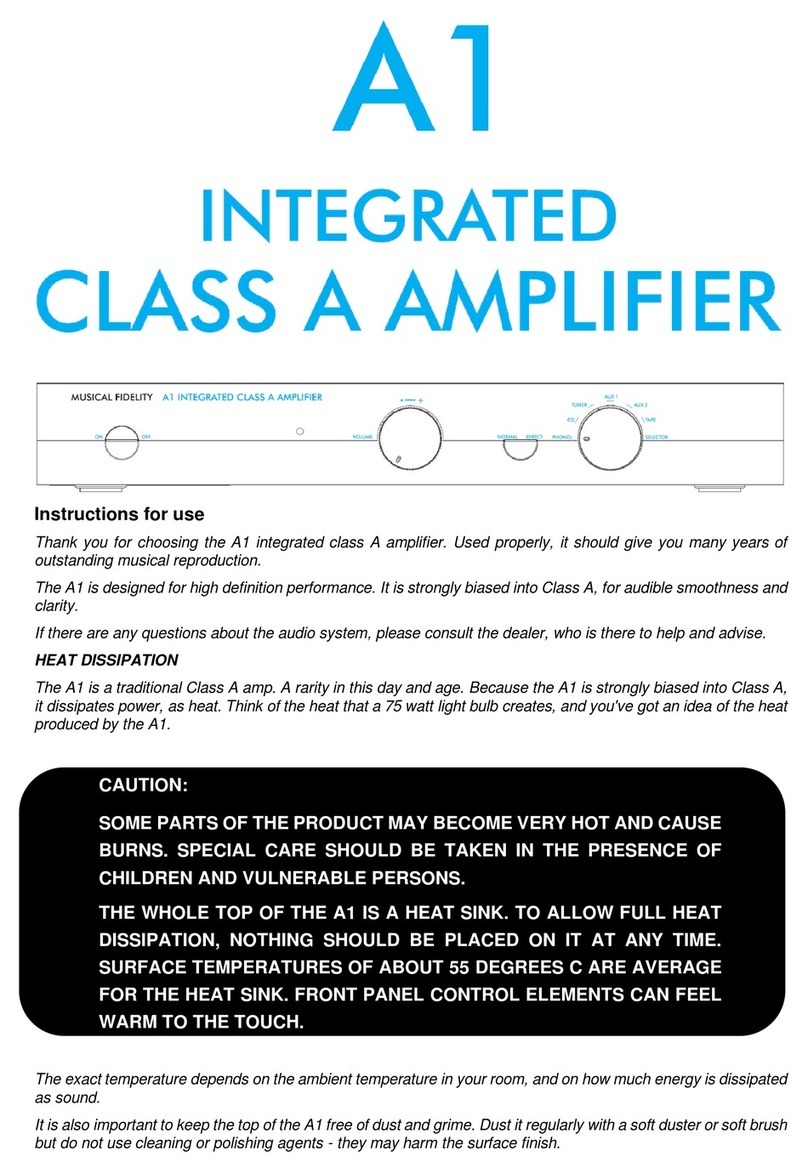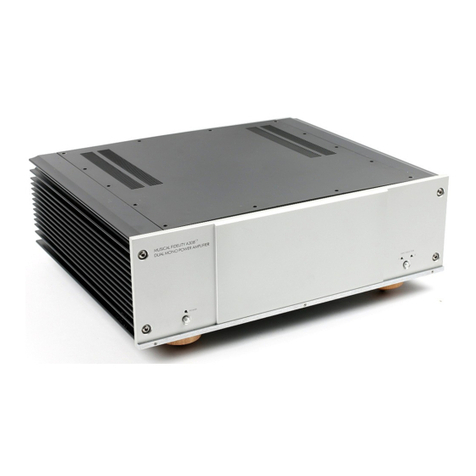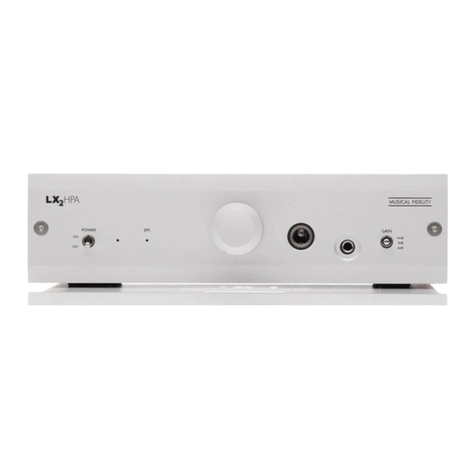
HEADPHONE
PREAMPLIFIER
LINE inputs
OPERATION
These inputs accept LINE level (nominally anything between 0.03V-3V RMS) signals from any hi-fi source.
They may
be
connected directly to the stereo outputs of a
CD
player, DVD, Tape, Minidisk, and TV or similar.
Signals from a normal turntable with moving coil or moving magnet cartridge, (and
no
internal amplification), will
need a PHONO preamplifier connected before the
M1
HPAP.
Alternatively,
it
may
be
used to add headphone output to
an
existing integrated or pre-power amplifier setup.
To do this, simply identify the LINE outputs from the integrated or preamplifier. These are used for TAPE
RECORDING, and usually labeled TAPE OUT, TAPE REC or similar. Simply connect these outputs to the
M1
HPAP LINE
IN
sockets. If
you
had anything originally connected to the TAPE OUT or REC OUT sockets,
reconnect it to the LINE OUT sockets
on
the
M1
HPAP. See LINE output section below.
To use a LINE input, move the input select switch
on
the front panel to the desired LINE position.
USB input
To use the USB input, move the input select switch
on
the front panel to the USB position (up).
Plug
in
one or two pairs of headphones and adjust the volume control for comfortable listening.
LINE output
The LINE OUT sockets pass
on
the LINE INPUT totally unaffected. They are
in
fact directly connected to the
LINE INPUT RCA sockets to allow reconnection of a recording device (if the
M1
HPAP
is
using the TAPE REC
output of
an
Integrated/Pre-Amplifier).
Note: volume control has no effect on LINE
OUT
levels.
PRE output
The PRE OUT sockets give
an
output that
is
affected by volume control. They are
in
fact directly connected to
the output JACK sockets to allow connection of a power amplifier. This allows the
M1
HPAP to
be
used as a
preamplifier with one line, and one USB input. When used
as
a preamplifier, any unused headphones should
be
disconnected from the unit.
The USB input source may
be
selected for the PRE OUT sockets
by
selecting USB
on
the front panel switch.
The
M1
HPAP
is
a self contained unit. Therefore it does not mute the speakers
in
a system (even if using the
unit as a preamplifier). If listening through headphones
on
a system with speakers, please turn down the
speakers using the system volume control, or switch off the power amplifiers.
It is recommended
in
such a setup to switch
on
the power amplifiers AFTER switching
on
the HPAP, and to
switch off the power amplifiers BEFORE switching off the
M1
HPAP.
Computer settings for USB
A good quality USB A to B cable is required to connect the unit to the computer.
Plug the B (square) end into the socket
in
the back of the unit, and the A (rectangle) end into a free USB socket
on
the computer.
The computer should now detect the new hardware and install a generic driver automatically (No setup or driver
disk should
be
required).
CD,
MP3, WAV, AAC,
FLAG,
and
all other audio file types
p·layed
on
any software should now play through the
unit. This device has been designed to work with
PC
Windows
98,
ME,
2000, XP, Vista and
7,
as well as Apple
Macintosh
OS
X,
Snow Leopard and later.
PC
users-
Check the computer has picked up the device and
is
currently using it by clicking: (most Windows
versions)
-Start
-Settings
-Control panel
-Sounds and Multimedia
-Audio
Check that "USB audio device" appears under
PREFERRED AUDIO DEVICE tab
A second mixer will now
be
available which will
be
the default mixer whenever the unit
is
plugged
in.
Use this mixer to select the source or adjust levels
if required.
Mac users-
Check the computer has picked
up
the device and
is
currently using it by clicking: (MAC
OS
X)
-System preferences
-Hardware
-Sound
Check that "USB audio DAC"
is
selected under the
OUTPUT tab.
If the computer's warning sounds/chimes are to
played through the unit, make sure it
is
selected
under the
SOUND EFFECTS tab too.
Note: USB may also
be
selected as
an
output
in
some individual programs.
Please note: This device is a high speed serial data processor, and
by
its nature, requires a very high volume
of
USB band width. It will benefit greatly from being the only device connected on its USB 'bus'. Sharing the same
bus with otherdevices
may
cause unwanted artifacts such as dropouts
or
temporary loss
of
signal.
This
espeC?ially
applies to the use
of
the unit on a USB hub/splitteralongside other USB components
M1
HPAP issue 1
MUSICAL
FIDELITY
Page 8
of
11
